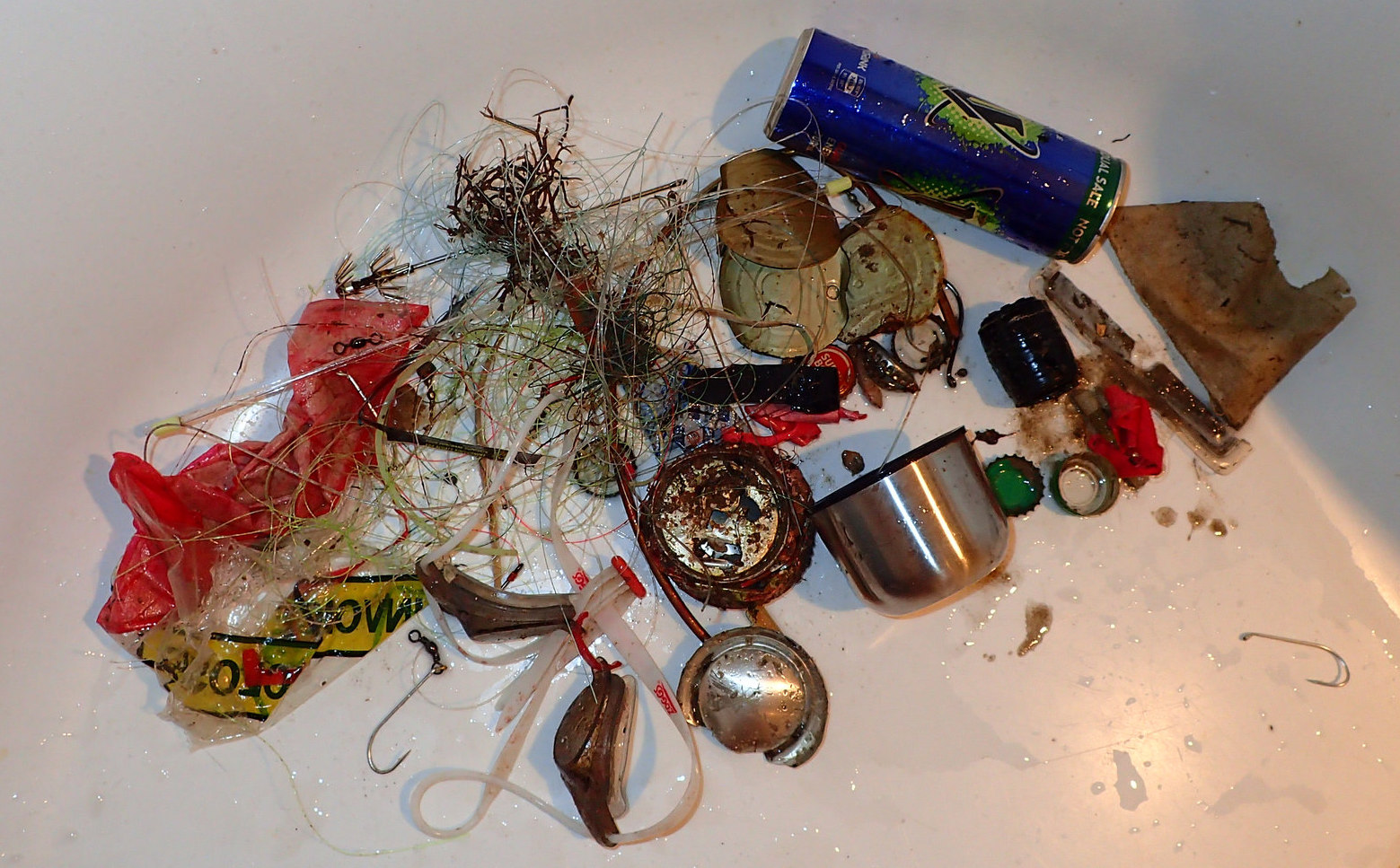Diving for Knowledge, and Rubbish
Since its founding in 1955, the Underwater Research Group (URG) dive club of New South Wales has been at the forefront of scuba diving technology as well as underwater research and photography. Over the years, the club has done everything from fish identification surveys and shipwreck investigations to prospecting for gold and fixing the transmitter on a Port Jackson shark. These days, the group mainly does recreation dives as well as Reef Life Surveys, marine species censuses, and Seaside Scavenge clean-up dives. We caught up with Rianti Bieler, a URG member since 2013, to talk about diving, marine debris and the wonders of underwater research.
What do you love most about diving and being involved with this group?
This will sound cliche but I love the weightlessness of being underwater. It’s the closest you’ll ever get to flying! I feel myself relax as soon as I go under, so diving is very therapeutic for me. I love diving with this group because everyone is so passionate about the ocean and marine conservation and actively doing something about it. I have also learned a lot from the senior members, who are very generous in sharing their knowledge about anything from boat handling to fish identification.
URG was established in 1955. That’s an impressive run! How has the group evolved over the decades?
It started with a group of engineers who loved mucking around in the ocean. They experimented a lot with building anything from their own regulators to an underwater sled and tent — just because they could. At one point, URG even had its own mini yellow submarine! Since not many people dived in the 1950s and ’60s, some URG members became an important source of information for the Australian Museum, which often asked them to take marine specimens for their collections. In the ’80s, URG evolved to become more of a recreational dive club before taking up more research projects again over the past three decades. Through all these changes, the club has always been passionate about marine conservation and attracts dedicated divers who volunteer their time to help with conservation projects.

How has the group contributed to scientific understanding of reef life, biodiversity, and invasive species in New South Wales?
Our main areas of research is Reef Life Survey (RLS), where members get trained and certified to do regular surveys not just in Sydney but at other dive spots around Australia. RLS is a collaboration of professional scientists working alongside citizen scientists, with a mission to provide high-quality, unbiased and publicly available information on marine animal species numbers and density that is used to better inform management and policy, and build public knowledge on the status of reefs. The results of these surveys have shown that protected areas such as Cabbage Tree Bay (an aquatic reserve in Manly), have a much higher number of marine animals recorded compared to other non-protected areas. More than 160 species of fish have been recorded in this reserve. URG has been involved in Reef Life Survey since 2014 and has conducted over 100 surveys since.
What has the group learned about marine debris in Sydney or other parts of NSW?
URG started doing regular clean-up dives in 2015, but our members have always come out of a dive with their wetsuit pockets bulging with rubbish even on recreational dives. The spots we have cleaned up are popular fishing spots, so the most common types of marine debris found are fishing lines, lures, sinkers and hooks. Once in Camp Cove, we collected 220 fishing sinkers in just one hour of diving. Fishing lines are a big problem because of the entanglement risk to marine animals, and they are notoriously difficult to remove. Most of them are found tangled around soft corals and sponges, and if not removed carefully, we risk damaging the marine life. As we’ve only had data from the last two years, it’s hard to say whether the problem has gotten better or worse but in Clifton Gardens, where we currently do our monthly clean-up dive, no matter how much rubbish we take out each month, there seems to be more in the water. It’s very frustrating.

What, if any, marine species or sites should we be most concerned about right now?
I am particularly concerned about the grey nurse shark as it’s critically endangered in the eastern coast of Australia. We used to see a lot of them at Magic Point in Maroubra, but they are all gone now and divers only spot the odd one or two in the area. There is also concern about weedy sea dragons since evidence suggests there are fewer of them than there used to be. URG is currently collaborating with University of Technology Sydney to try to determine whether their population is decreasing, and, if so, looking to have their protection status changed.
What’s the strangest or most exciting thing you’ve ever discovered underwater?
The strangest things I’ve ever discovered underwater are hundreds of toilets lying on the sea floor in the Red Sea of Egypt. The most exciting thing is encountering hammerhead sharks, also in the Red Sea. We were dropped off in the middle of the ocean and the water was crystal clear, but we couldn’t see the bottom, even when we were waiting at 40m. And then out of nowhere a school of over forty hammerheads appeared, swimming slowly over, under, and around us before disappearing again into the abyss. I have no idea how the dive guide knew they were going to swim past.
Tell us some of the ways the public can get involved.
URG is currently involved in the Reef Explorers Down Under project, which both divers and non-divers can help with. The aim of the project is to inspire people to gain a better understanding of the marine environment of the Great Southern Reef by developing and managing projects in which citizen scientists engage with professional scientists on the ground and underwater. Divers can also get involved in one of our field survey projects, photographing weedy sea dragons, monitoring sea kelp, or recording biodiversity. Non-divers can get involved in the analysis of data, or by completing online surveys. And, of course, you can always join our monthly clean-up dive!


Thankyou for this immersive description of underwater research and a picture of the issues on the NSW coast line. Very informative, and strongly felt.